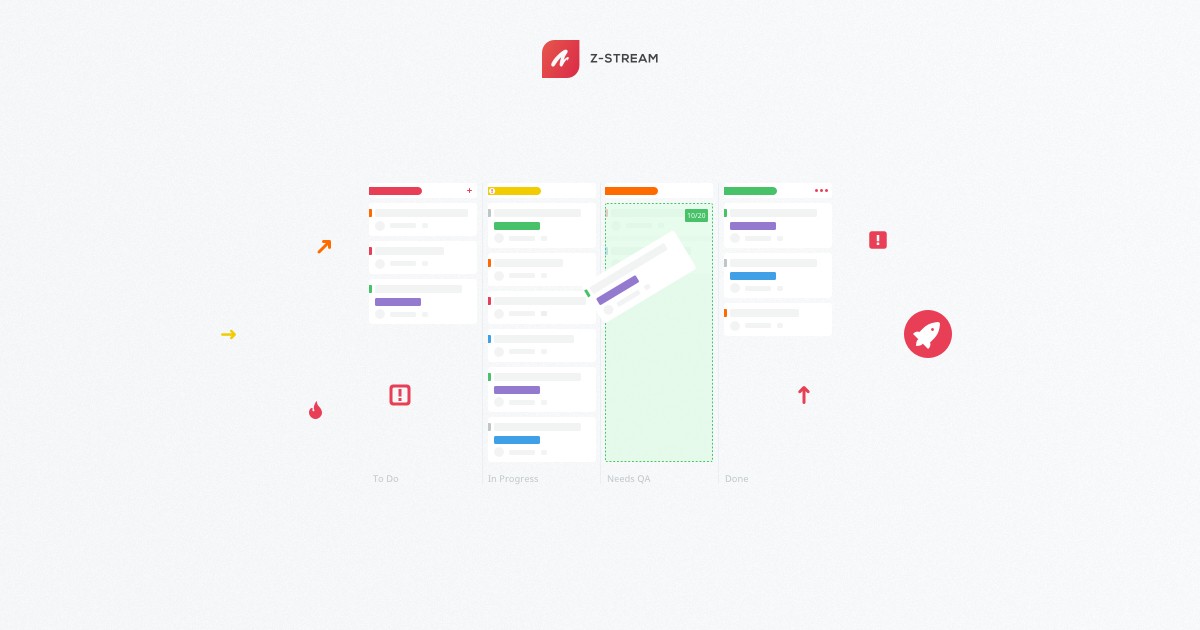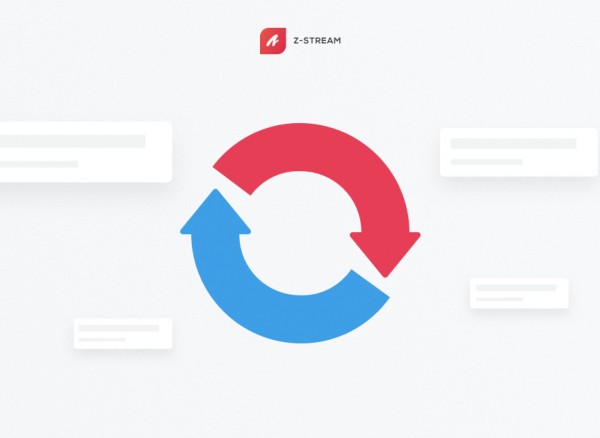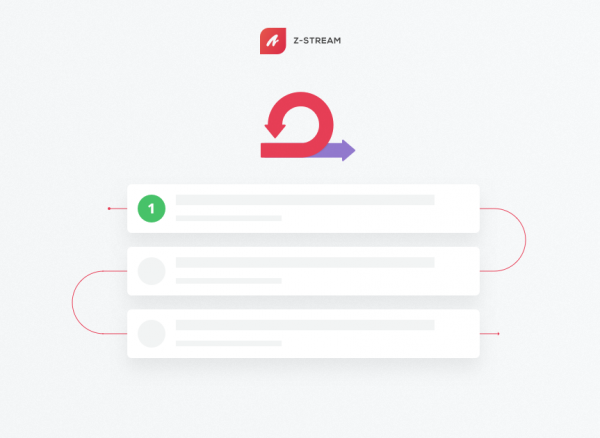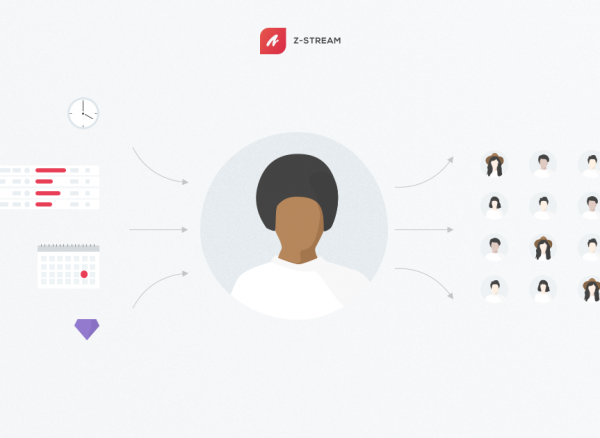
Kanban is one of the most popular methods for working in Agile. This blog will explore in detail Kanban and Kanban methodology, showing when and where it’s most effective.
What is Kanban?
The word “Kanban” is the Japanese word for “card”. As a process, it originated in the 1940s, when the Toyota corporation discovered that “just in time” processes increased production. This means producing products to meet a demand, rather than manufacturing a large stock in hopes that it would find consumers. This was tracked with cards (hence the name) on a large board, which traced the manufacturing process from the very beginning to shipping the final product. This is the Kanban methodology in a nutshell: tracking work from ideation to completion. Think about it like a product on an assembly line where you can see all the assembly line’s stages at once. Today that process is usually done on an online Kanban tracker, with cards curated and moved along as work is completed. The Kanban method keeps a process moving without any single component becoming a blocker.
How does Kanban work?
Kanban is based on the idea of continuous delivery: there is no single, final delivery at the end of the process but a series of iterations that demonstrate progress. The Kanban board has a set of columns that indicate where work is in the work cycle. These are usually along the lines of: “To Do”, “In Progress”, “Review”, and “Done”. Work is moved from one column to another until specific tasks, components, or products are completed. Work in Progress (WIP) limits are designed to ensure that there are no bottlenecks. Kanban systems have cards representing each individual item of work that needs to be done in a project.

More important than the organizational mechanics of Kanban, however, are the principles of Kanban, and how they influence how an organization or team approaches tasks.
Kanban Principles and Practices
Kanban has four key principles. These are:
- Visualize what you do: Make each element of the work physically visible – either with an actual paper card or via an online board – so that everyone on the team can see it.
- Limit work in progress: Control the amount of work a person is responsible for and keep it at a reasonable (and accomplishable) limit.
- Focus on flow: Rather than looking at what is being worked on, look at where it is among the board’s columns.
- Continuous improvement: To take full advantage of this workflow, bring in new, incremental improvements and changes.
The six Kanban method practices are:
- Visualize the flow of work: Set up your Kanban board to clearly display work movement. This should be done in a manner that makes sense to your organization.
- Limit work in progress: Prevent bottlenecks by limiting how much work can be taken on by the team.
- Manage flow: Keep the work moving, even if that means changing how the work is broken down.
- Make process policies explicit: Ensure that everyone on the team is following the Kanban guidelines as you’re implementing them, preventing anyone from “going rogue”.
- Implement feedback loops: More specifically, implement short feedback loops so that any problems can be discovered quickly and before they’ve sprawled into monstrous dimensions.
- Improve collaboratively: Use all the team to examine what works. For all that doesn’t, create solutions with reproducible results. This should be done as close to the scientific method as possible.
Benefits of Kanban
Clearly there are many benefits of the Kanban system in software development or else it wouldn’t be so widely adopted by the IT industry. Kanban allows for a visual representation of the continuous workflow management. Because of this, tasks aren’t lost and everyone on the team can see all progress and updates. Not just for software developers, Kanban can be used by any team in virtually any business. The benefits of the Kanban system are productive for any workplace that wants to deliver goods or services in as efficient a manner as possible. Because of the continuous delivery and the ability to reorganize the workflow quickly, Kanban is perfect for responding to the requirements of your consumer quickly. Work productivity is very high in Kanban-led systems due to limiting the amount of work in progress and allowing employees to focus exclusively on their current tasks.
What are the Differences Between Kanban and Scrum?
Although both are valid agile methods of working, a comparison of Kanban vs Scrum is worthwhile for seeing what will work for you. What’s the difference between Kanban and Scrum? Both make use of core agile principles: being able to organize and respond to quick organizational and procedural changes in a way that produces the best outcome. Where Kanban methodology is about getting the individual building blocks of a project or process done as quickly as possible, Scrum is about delivering in set, fixed intervals of time. Scrum also requires releases according to a fixed schedule (specifically: at the end of each Scrum sprint), as opposed to Kanban’s continuous release cycle. Scrum has a set of specific roles for the process (such as a product owner, a Scrum master, etc) while there is lack of organized titles in Kanban. Most importantly is how each incorporates the agile idea of responding to change: Scrum doesn’t make changes during a sprint as opposed to Kanban’s ability to change at any time.
Bringing Kanban Into Your Work
It’s no surprise that software development was quick to adopt Kanban principles. Software is easy to adapt and changes quickly to accommodate evolving needs, making it a perfect fit for the Kanban lifecycle. Although now frequently associated with IT, Kanban can be incorporated into any work process where you want team agility and fast delivery of your product or service. Isn’t this exactly what your customers want from you?
Kanban methods are a great way to break down a complicated project and make sure the work gets done with minimal setbacks. As you can imagine, this process is not ideal for every situation or organization. The principles articulated above can also be adapted to what would work for you; there’s no need to be completely dogmatic.
The Kanban method can yield great results to your workflow. But to do so effectively it helps to have the right tools. Kanban principles and practices are easily managed with Z-Stream, an all-in-one project management tool. Its user-friendly interface and clean design will help you get started quickly and onboard your whole team in a snap. Get your team on one page and ship great products faster with Z-Stream. Start increasing your team’s efficiency right now with a free trial. We’ll personally help you get set up!



